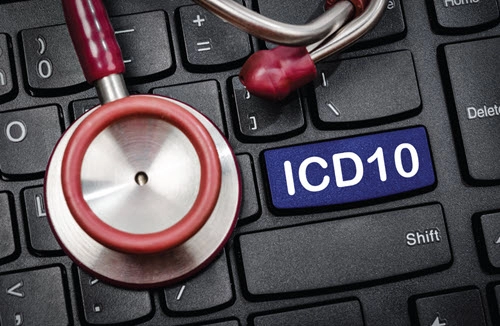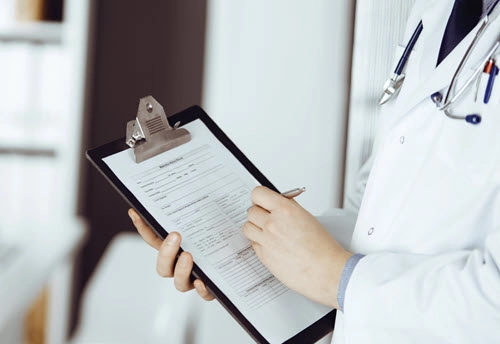Hint: You will see a new code for a post-COVID-19 condition.
The Centers for Medicare & Medicaid Services (CMS) recently released the new ICD-10-CM 2022 codes. Although you won’t see any podiatry-specific codes this year, you still have plenty new options to wade through. Read on to prep your podiatry practice for these new codes.
Editor’s note: These codes will go into effect Oct. 1, 2021.
Focus on New Cannabis T-Codes
ICD-10-CM 2022 will add some new T-codes. T-codes encompass injury, poisoning, and other consequences of external causes.
For poisoning by, adverse effect of, and underdosing of cannabis, you should report the following codes:
- T40.711X (Poisoning by cannabis, accidental (unintentional))
- T40.712X (Poisoning by cannabis, intentional self-harm)
- T40.713X (Poisoning by cannabis, assault)
- T40.714X (Poisoning by cannabis, undetermined)
- T40.715X (Adverse effect of cannabis)
- T40.716X (Underdosing of cannabis)

For poisoning by, adverse effect of, and underdosing of synthetic cannabinoids, you should report the following new codes:
- T40.721X (Poisoning by synthetic cannabinoids, accidental (unintentional))
- T40.722X (Poisoning by synthetic cannabinoids, intentional self-harm)
- T40.723X (Poisoning by synthetic cannabinoids, assault)
- T40.724X (Poisoning by synthetic cannabinoids, undetermined)
- T40.725X (Adverse effect of synthetic cannabinoids)
- T40.726X (Underdosing of synthetic cannabinoids)
Don’t miss: With all of the above codes, you must add a seventh character to indicate the type of patient encounter. Your choices are as follows:
- A — Initial
- D — Subsequent
- S — Sequela
Pinpoint New Covid-19 Option
In 2022, you will gain a new COVID-19 code: U09.9 (Post COVID-19 condition, unspecified).
You will also gain some coding notes with U09.9. For example, code U09.9 enables an establishment of a link with COVID-19, per ICD-10-CM.
Also, you should not report U09.9 in patients that are still presenting with active COVID-19. An exception to this rule is if a patient has a re-infection of COVID-19 that occurs with a condition related to the prior case of COVID-19.
You will also get a new code first note with U09.9. You should first code the specific condition that is related to COVID-19, if it is known. Some examples include the following:
- Chronic respiratory failure — J96.1- (Chronic respiratory failure)
- Loss of smell and taste — R43.8 (Other disturbances of smell and taste)
- Multisystem inflammatory syndrome — M35.81 (Multisystem inflammatory syndrome)
- Pulmonary embolism — I26.- (Pulmonary embolism)
- Pulmonary fibrosis — J84.10 (Pulmonary fibrosis, unspecified)

Mark Down New Z Codes
In 2022, you will also gain some new Z code options. Z codes encompass factors influencing health status and contact with health services. The new codes are as follows:
- Z55.5 (Less than a high school diploma) Note: This code also includes no general equivalence degree (GED).
- Z58 (Problems related to physical environment)
- Z58.6 (Inadequate drinking-water supply) Note: This code also includes lack of safe drinking water.
You will also gain these numerous Z code options for homelessness and housing instability:
- Z59.00 (Homelessness unspecified)
- Z59.01 (Sheltered homelessness) Note: This code also includes doubled up and living in a shelter such as: motel, scattered site housing, temporary or transitional living situation.
- Z59.02 (Unsheltered homelessness) Note: This code also includes residing in place not meant for human habitation such as: abandoned buildings, cars, parks, sidewalk and residing on the street.
- Z59.81 (Housing instability, housed) Note: This code also includes foreclosure on home loan, past due on rent or mortgage, and unwanted multiple moves in the last 12 months.
- Z59.811 (Housing instability, housed, with risk of homelessness) Note: This code also includes imminent risk of homelessness.
- Z59.812 (Housing instability, housed, homelessness in past 12 months)
- Z59.819 (Housing instability, housed unspecified)
- Z59.89 (Other problems related to housing and economic circumstances) Note. This code also includes foreclosure on loan, isolated dwelling, and problems with creditors.
In addition, you will get one new code for immunization safety counseling and one for food allergies:
- Z71.85 (Encounter for immunization safety counseling) Note: This code also includes encounter for vaccine product safety counseling. Don’t miss: You should also code the encounter for immunization (Z23) and if the immunization was not carried out (Z28.-).
- Z91.014 (Allergy to mammalian meats) Note: This code includes an allergy to beef, lamb pork, and red meats.
Finally, ICD-10-CM will give you one new code for suicidal behavior and one for nonsuicidal self-harm. They are as follows:
- Z91.51 (Personal history of suicidal behavior) Note: This code also includes a personal history of parasuicide, self-poisoning, and a suicide attempt.
- Z91.52 (Personal history of nonsuicidal self-harm) Note: This code also includes a personal history of nonsuicidal self-injury, self-inflicted injury without suicidal intent, and self-mutilation.


